Froit Vander Harst has been living in Mongolia for 10 years. In 2006, he came to live in the Ulaanbaatar city and bought the house near Gandan monastery. Before he came here, he was living in a ger from 1997 in Holland.
Now he produces ger and sells it to the Europe that suits perfectly for the lifestyle of European customers.
-Why do you like living in a ger?
-Because it is nice to live in a ger, also in Holland. I lived in a ger for ten years. I was a first one, who lives in a ger in Holland. Because of socialism there were not many gers in the Western Europe.
Mongolian ger is difficult in the climate in Holland. Many people try to do it but after two or three years they give up. They could not fix Mongolian ger to make it waterproof. I have changed everything because we made our first ger in Holland, from Holland materials. People then start to learn the difference. I started in 1997 and everybody came to visit us.
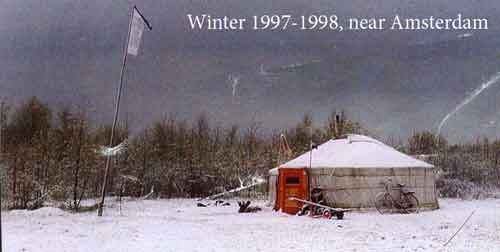 First ten years was really nice in a ger. We develop completely new ger that looks same like a ger but it was made for European climate and made for European customer. Because people living in Europe have different lifestyle, they have different way of sleeping and different way of cooking, different way of work. It is totally different from Mongolia. So they use the ger, but they use it very different way.
First ten years was really nice in a ger. We develop completely new ger that looks same like a ger but it was made for European climate and made for European customer. Because people living in Europe have different lifestyle, they have different way of sleeping and different way of cooking, different way of work. It is totally different from Mongolia. So they use the ger, but they use it very different way.
This we did in the first ten years. Then we tried to move this production to Mongolia. Now we are making gers here.
-How do you find your customers?
-We only export to abroad and we do not sell in Mongolia. Because we make them very waterproof, they are super expensive compared to Mongolian gers. There is no reason to buy our ger in Mongolia even with very good Mongolian ger is cheaper than ours.
Mongolia have many tourism companies and tourists see the ger and they want to take back home.
First we tried to find a producer in Mongolia who wants to make what we want. It was not really success. Then in 2006 we decided to start our own factory here. We sell our gers to Europe, North America and other places.
Half of our customers are people who really live in the ger. But they are not herders and they do not live in the city. They live in the countryside in Holland, Germany, France, USA, Australia. They live ecological lifestyle. They do not care if the ger is from Mongolia or from South Africa. They want to live this lifestyle. That is about half of our customer.
Then 25 percent of our customers operate camps in Europe, which is kind of new fashion thing.
The last 25 percent of our customer are people who use the ger next to their house. They use the ger for extra room or for yoga classes. Because they like round and ground on the earth. They want to do yoga classes in nature.
Froit Vander Harst has been living in Mongolia for 10 years. In 2006, he came to live in the Ulaanbaatar city and bought the house near Gandan monastery. Before he came here, he was living in a ger from 1997 in Holland.
Now he produces ger and sells it to the Europe that suits perfectly for the lifestyle of European customers.
-Why do you like living in a ger?
-Because it is nice to live in a ger, also in Holland. I lived in a ger for ten years. I was a first one, who lives in a ger in Holland. Because of socialism there were not many gers in the Western Europe.
Mongolian ger is difficult in the climate in Holland. Many people try to do it but after two or three years they give up. They could not fix Mongolian ger to make it waterproof. I have changed everything because we made our first ger in Holland, from Holland materials. People then start to learn the difference. I started in 1997 and everybody came to visit us.
 First ten years was really nice in a ger. We develop completely new ger that looks same like a ger but it was made for European climate and made for European customer. Because people living in Europe have different lifestyle, they have different way of sleeping and different way of cooking, different way of work. It is totally different from Mongolia. So they use the ger, but they use it very different way.
First ten years was really nice in a ger. We develop completely new ger that looks same like a ger but it was made for European climate and made for European customer. Because people living in Europe have different lifestyle, they have different way of sleeping and different way of cooking, different way of work. It is totally different from Mongolia. So they use the ger, but they use it very different way.
This we did in the first ten years. Then we tried to move this production to Mongolia. Now we are making gers here.
-How do you find your customers?
-We only export to abroad and we do not sell in Mongolia. Because we make them very waterproof, they are super expensive compared to Mongolian gers. There is no reason to buy our ger in Mongolia even with very good Mongolian ger is cheaper than ours.
Mongolia have many tourism companies and tourists see the ger and they want to take back home.
First we tried to find a producer in Mongolia who wants to make what we want. It was not really success. Then in 2006 we decided to start our own factory here. We sell our gers to Europe, North America and other places.
Half of our customers are people who really live in the ger. But they are not herders and they do not live in the city. They live in the countryside in Holland, Germany, France, USA, Australia. They live ecological lifestyle. They do not care if the ger is from Mongolia or from South Africa. They want to live this lifestyle. That is about half of our customer.
Then 25 percent of our customers operate camps in Europe, which is kind of new fashion thing.
The last 25 percent of our customer are people who use the ger next to their house. They use the ger for extra room or for yoga classes. Because they like round and ground on the earth. They want to do yoga classes in nature.
-How about the price?
-We are selling a ger with five wall, ready for shipping at MNT 8-9 million. Mongolian ger costs about MNT 1.6 – 2 million. We are four times more expensive before shipping.
For the customers in Europe, the difference is much of course you can buy a ‘normal’ Mongolian ger in Europe also. But the price difference is only 50 percent. Here we are like 80 percent more. Because transport and marketing are same. Those costs make our ger not so much more expensive than Mongolian ger after all transport is paid.
But if you look at the price of the ger and you compare it to monthly wages of the people, Mongolian family spends anything between 6 months to one year to buy a ger. Their wages are MNT 200-400 hundred. They buy ger and ger costs something like four five months or more. But if you buy the same ger in Europe at 8000 thousand Euro that is actually only three months wages for those people. Actually gers in Europe and North America are still relatively cheaper than they are in Mongolia, which is interesting.
-What makes your gers more expensive than typical Mongolian ger?
-First we make Mongolian ger waterproof. There are two different things in waterproof. Waterproof means rain does not come in and there is moisture proof. There is always water in the air in Europe. There are 200 days of rain in year. The moisture always stays there. Even if it does not rain, the day after there is still everything is wet. This water works on the ger from inside and from the outside. Rain only comes from outside but other water comes from inside. This is a problem that there is always there 365 days per year. The ger is made of natural materials. If you put natural materials in the outside, they will become compost after two or three years
How do you fight this water all the time and still live in natural material is very hard. We slowly developed solutions for all this problems from 1996 to 2002. Since 2002, we have not changed much anymore.
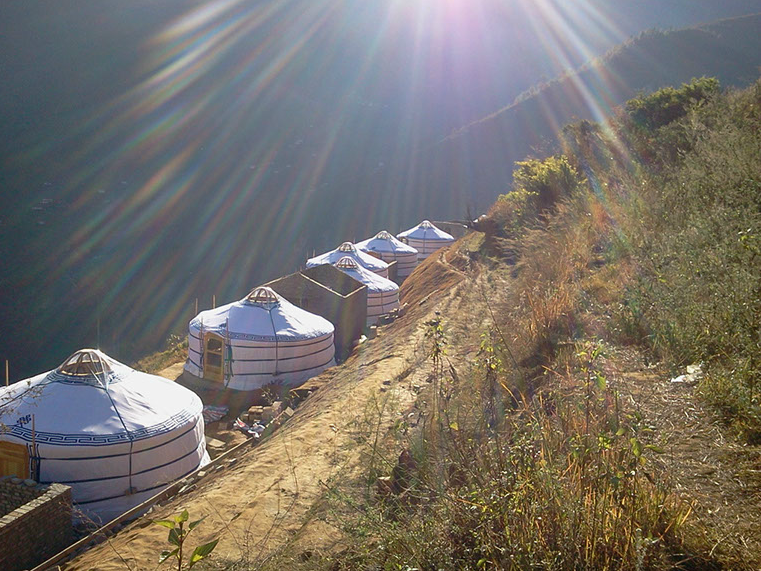
-How about the price?
-We are selling a ger with five wall, ready for shipping at MNT 8-9 million. Mongolian ger costs about MNT 1.6 – 2 million. We are four times more expensive before shipping.
For the customers in Europe, the difference is much of course you can buy a ‘normal’ Mongolian ger in Europe also. But the price difference is only 50 percent. Here we are like 80 percent more. Because transport and marketing are same. Those costs make our ger not so much more expensive than Mongolian ger after all transport is paid.
But if you look at the price of the ger and you compare it to monthly wages of the people, Mongolian family spends anything between 6 months to one year to buy a ger. Their wages are MNT 200-400 hundred. They buy ger and ger costs something like four five months or more. But if you buy the same ger in Europe at 8000 thousand Euro that is actually only three months wages for those people. Actually gers in Europe and North America are still relatively cheaper than they are in Mongolia, which is interesting.
-What makes your gers more expensive than typical Mongolian ger?
-First we make Mongolian ger waterproof. There are two different things in waterproof. Waterproof means rain does not come in and there is moisture proof. There is always water in the air in Europe. There are 200 days of rain in year. The moisture always stays there. Even if it does not rain, the day after there is still everything is wet. This water works on the ger from inside and from the outside. Rain only comes from outside but other water comes from inside. This is a problem that there is always there 365 days per year. The ger is made of natural materials. If you put natural materials in the outside, they will become compost after two or three years
How do you fight this water all the time and still live in natural material is very hard. We slowly developed solutions for all this problems from 1996 to 2002. Since 2002, we have not changed much anymore.

-What have you changed?
-We stopped use pine. Mongolian ger is made of pine and larch combination. Larch for walls and rafters, pine for door and crown. But after two or three years, pine does not work in European climate. Larch works and it takes 15 – 20 years. So we changed door and roof (toono) with larch. That is very big change.
I asked Mongolian company to make toono/crown and door with larch and they do not want to do it. Their machines could not do it. That is why we make it ourselves.
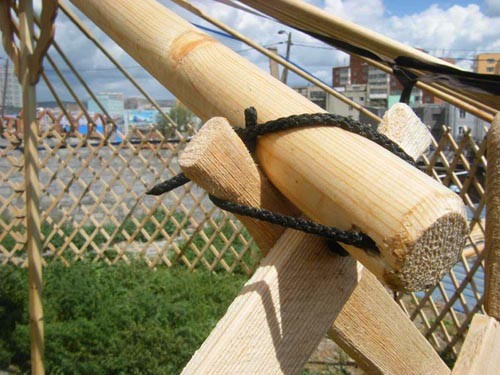 The next step is change all the Mongolian horse hair and camel skin, it gets soft in Europe. Rope on the outside, it must be acceptable for five to ten years, so we use marine-grade webbing. Tsagaan burees/the outer cover is made with very cheap polyester in Mongolia. Of course people in Europe wants tsagaan burees that works for 10 years. Because there is no market, it is not easy to buy new one every three years. The difference in Mongolia is we have Narantuul and we have big national production of gers. But in Europe there is no Narantuul. Everything has to come from Mongolia or be made in Europe, which is very expensive. European customers prefer to spend more money in the front so they do not have to spend money after.
The next step is change all the Mongolian horse hair and camel skin, it gets soft in Europe. Rope on the outside, it must be acceptable for five to ten years, so we use marine-grade webbing. Tsagaan burees/the outer cover is made with very cheap polyester in Mongolia. Of course people in Europe wants tsagaan burees that works for 10 years. Because there is no market, it is not easy to buy new one every three years. The difference in Mongolia is we have Narantuul and we have big national production of gers. But in Europe there is no Narantuul. Everything has to come from Mongolia or be made in Europe, which is very expensive. European customers prefer to spend more money in the front so they do not have to spend money after.
My tsagaan burees is made from German material which take 9 or 10 years. Under the outer cover is the waterproofing, berzent. We import berzent from Scotland. We import material for Tsavag/ceiling and hushig/wall curtains from Turkmenistan. We buy esgii/felts from Erdenet carpet fabric as they have the only esgii/felt that have no smell.
-How many gers you produce per year?
-Now it is a big thing that there are 1000 gers in Europe. Not mine, mine is only about 200. I am not interested in make too many gers. I prefer to make good gers not so many.
Also, it is really difficult to find perfect larch. I am happy that we make 20-30 gers per year, not more. Look at Mongolia, we do not have so much wood and we should be careful.
-What was the biggest problem you encountered starting your production in Mongolia?
-Mongolia does not have basic industries. If you want to start a factory in Mongolia, you have to plan long time, you have to go to China for machines and you have to go to Korea to find a glue and you have to go to Russia to find a cable. All this small things needed at the workshop is much more difficult to be found in Mongolia.
I Holland we chose 200 different shops for everything, also very specialized shops. There is no quick way to fix it. The only way is to wait until there are more industries, which will need more secondary supplies. It is a slow development.
-Thank you.
For more info on the ger production, please visit at www.euro-yurts.com
-What have you changed?
-We stopped use pine. Mongolian ger is made of pine and larch combination. Larch for walls and rafters, pine for door and crown. But after two or three years, pine does not work in European climate. Larch works and it takes 15 – 20 years. So we changed door and roof (toono) with larch. That is very big change.
I asked Mongolian company to make toono/crown and door with larch and they do not want to do it. Their machines could not do it. That is why we make it ourselves.
 The next step is change all the Mongolian horse hair and camel skin, it gets soft in Europe. Rope on the outside, it must be acceptable for five to ten years, so we use marine-grade webbing. Tsagaan burees/the outer cover is made with very cheap polyester in Mongolia. Of course people in Europe wants tsagaan burees that works for 10 years. Because there is no market, it is not easy to buy new one every three years. The difference in Mongolia is we have Narantuul and we have big national production of gers. But in Europe there is no Narantuul. Everything has to come from Mongolia or be made in Europe, which is very expensive. European customers prefer to spend more money in the front so they do not have to spend money after.
The next step is change all the Mongolian horse hair and camel skin, it gets soft in Europe. Rope on the outside, it must be acceptable for five to ten years, so we use marine-grade webbing. Tsagaan burees/the outer cover is made with very cheap polyester in Mongolia. Of course people in Europe wants tsagaan burees that works for 10 years. Because there is no market, it is not easy to buy new one every three years. The difference in Mongolia is we have Narantuul and we have big national production of gers. But in Europe there is no Narantuul. Everything has to come from Mongolia or be made in Europe, which is very expensive. European customers prefer to spend more money in the front so they do not have to spend money after.
My tsagaan burees is made from German material which take 9 or 10 years. Under the outer cover is the waterproofing, berzent. We import berzent from Scotland. We import material for Tsavag/ceiling and hushig/wall curtains from Turkmenistan. We buy esgii/felts from Erdenet carpet fabric as they have the only esgii/felt that have no smell.
-How many gers you produce per year?
-Now it is a big thing that there are 1000 gers in Europe. Not mine, mine is only about 200. I am not interested in make too many gers. I prefer to make good gers not so many.
Also, it is really difficult to find perfect larch. I am happy that we make 20-30 gers per year, not more. Look at Mongolia, we do not have so much wood and we should be careful.
-What was the biggest problem you encountered starting your production in Mongolia?
-Mongolia does not have basic industries. If you want to start a factory in Mongolia, you have to plan long time, you have to go to China for machines and you have to go to Korea to find a glue and you have to go to Russia to find a cable. All this small things needed at the workshop is much more difficult to be found in Mongolia.
I Holland we chose 200 different shops for everything, also very specialized shops. There is no quick way to fix it. The only way is to wait until there are more industries, which will need more secondary supplies. It is a slow development.
-Thank you.
For more info on the ger production, please visit at www.euro-yurts.com
 First ten years was really nice in a ger. We develop completely new ger that looks same like a ger but it was made for European climate and made for European customer. Because people living in Europe have different lifestyle, they have different way of sleeping and different way of cooking, different way of work. It is totally different from Mongolia. So they use the ger, but they use it very different way.
First ten years was really nice in a ger. We develop completely new ger that looks same like a ger but it was made for European climate and made for European customer. Because people living in Europe have different lifestyle, they have different way of sleeping and different way of cooking, different way of work. It is totally different from Mongolia. So they use the ger, but they use it very different way. First ten years was really nice in a ger. We develop completely new ger that looks same like a ger but it was made for European climate and made for European customer. Because people living in Europe have different lifestyle, they have different way of sleeping and different way of cooking, different way of work. It is totally different from Mongolia. So they use the ger, but they use it very different way.
First ten years was really nice in a ger. We develop completely new ger that looks same like a ger but it was made for European climate and made for European customer. Because people living in Europe have different lifestyle, they have different way of sleeping and different way of cooking, different way of work. It is totally different from Mongolia. So they use the ger, but they use it very different way.
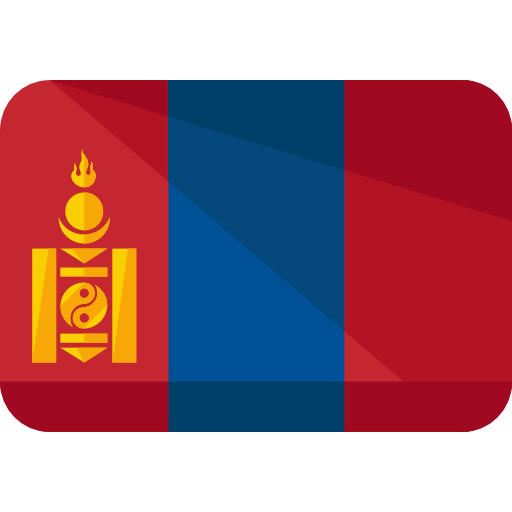
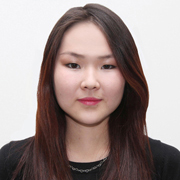


 The next step is change all the Mongolian horse hair and camel skin, it gets soft in Europe. Rope on the outside, it must be acceptable for five to ten years, so we use marine-grade webbing. Tsagaan burees/the outer cover is made with very cheap polyester in Mongolia. Of course people in Europe wants tsagaan burees that works for 10 years. Because there is no market, it is not easy to buy new one every three years. The difference in Mongolia is we have Narantuul and we have big national production of gers. But in Europe there is no Narantuul. Everything has to come from Mongolia or be made in Europe, which is very expensive. European customers prefer to spend more money in the front so they do not have to spend money after.
The next step is change all the Mongolian horse hair and camel skin, it gets soft in Europe. Rope on the outside, it must be acceptable for five to ten years, so we use marine-grade webbing. Tsagaan burees/the outer cover is made with very cheap polyester in Mongolia. Of course people in Europe wants tsagaan burees that works for 10 years. Because there is no market, it is not easy to buy new one every three years. The difference in Mongolia is we have Narantuul and we have big national production of gers. But in Europe there is no Narantuul. Everything has to come from Mongolia or be made in Europe, which is very expensive. European customers prefer to spend more money in the front so they do not have to spend money after.